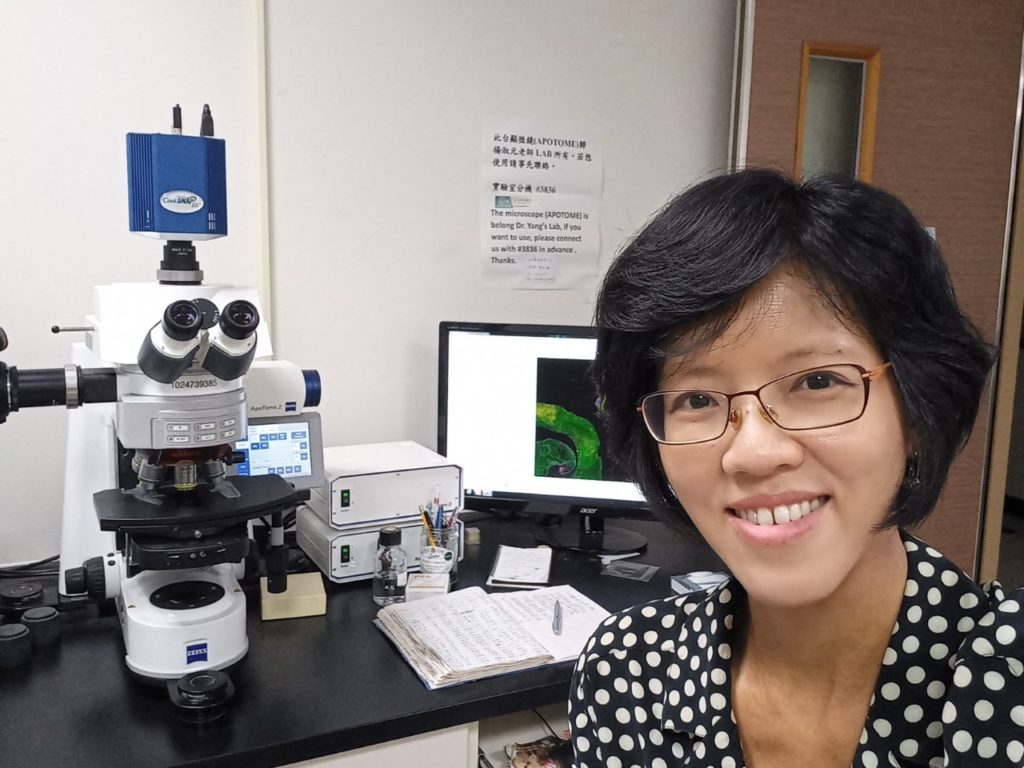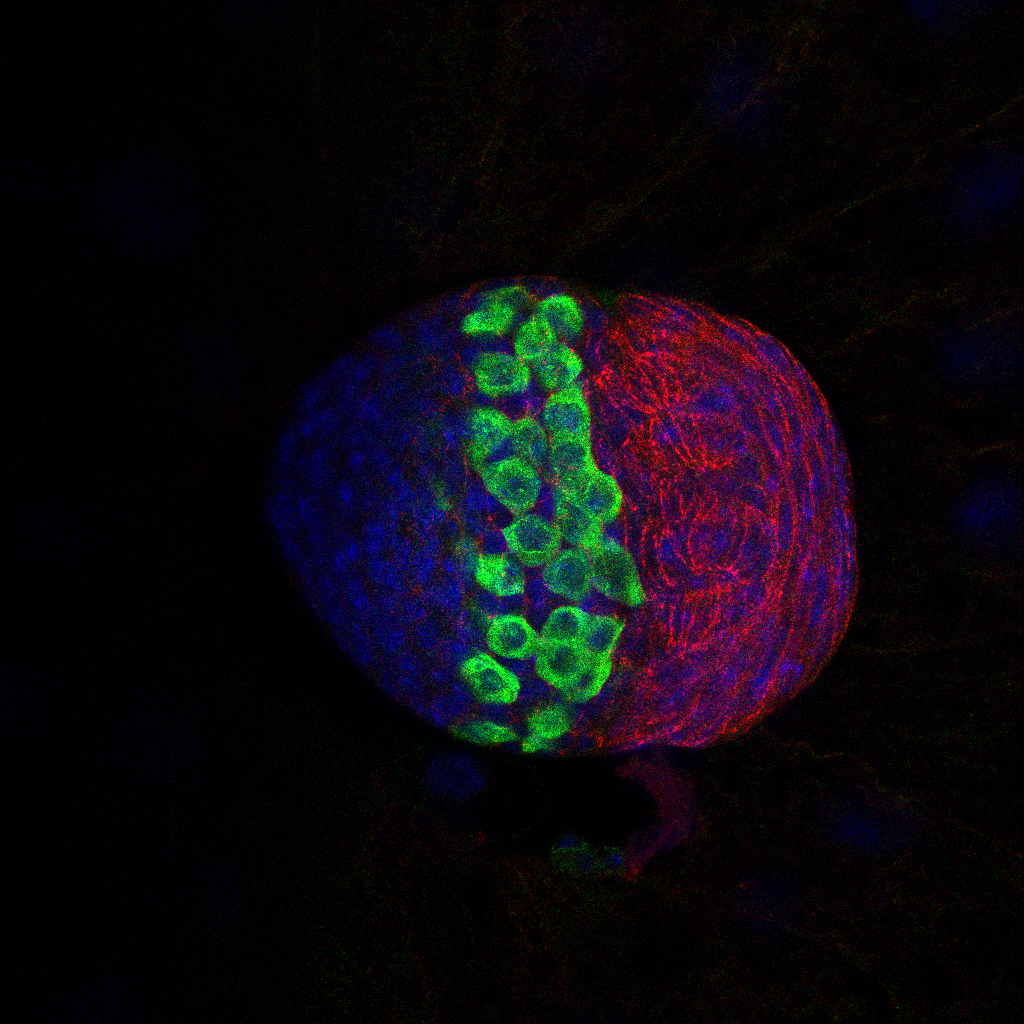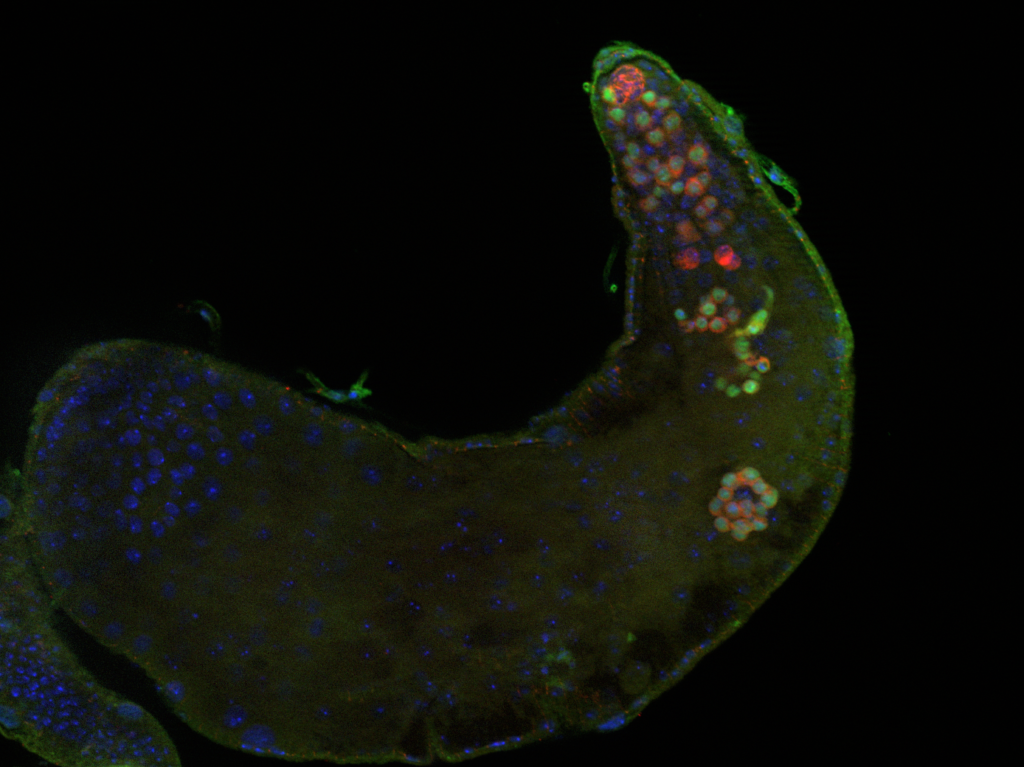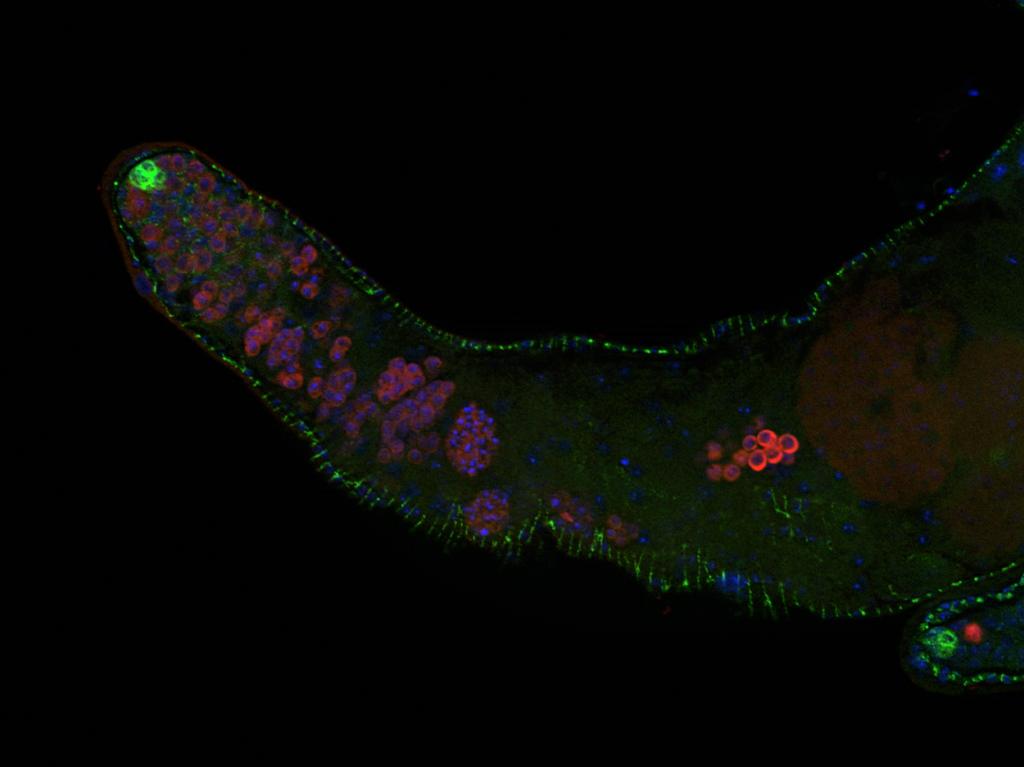Researchers use structured illumination and confocal microscopy to study proteins involved in Drosophila sex determination
The generation of offspring through sexual reproduction between a male and a female evolved approximately 1.2 billion years ago. An important part of this process is that each new generation contains both males and females in order to continue propagation of the species. How an embryo develops into either a male or a female is called sex determination and is a topic of interest to scientists as different species use surprisingly diverse methods to accomplish this.

Professor Shu Yuan Yang of Chang Gung University (Taiwan) studies what makes germ cells distinct from other cells and how they decide their sex using the fruit fly model organism (Drosophila melanogaster).
She recently published an article using structured illumination and confocal microscopy to investigate the role of Phf7, a protein which is highly enriched in the Drosophila male germline. Parts of this protein are unique and likely newly evolved in Drosophila, which adds curiosity as to how this protein functions.
What were your key findings?
We found the unique portion of Phf7, which is the C-terminus of the protein, is necessary for masculinization of Drosophila. As this domain of the protein is not found in closely related species, it indicates that it is undergoing rapid evolution. The conserved portion of Phf7 binds to histones (proteins bound to DNA). While we do not yet know exactly what this unique domain does, one thought is that it recruits factors to the DNA to alter gene expression. Our demonstration of its importance in Drosophila male sex determination provides an interesting example to add to the collection of diverse mechanisms in sex determination across species.
We also looked in the embryonic germline for factors that are regulated by Phf7 and found a downstream gene, HP1D3csd, that is activated by Phf7. HP1D3csd is part of the family of HP1 proteins, which are a well-known family of factors that promote heterochromatin propagation. The identification of HP1D3csd as an important downstream factor provides interesting new ideas regarding how the male germline program is initiated and regulated. One idea is that Phf7 can activate or even recruit HP1D3csd to loci important for germline masculinization. It would be interesting to study which factors interact and cooperate with one another.
How did microscopy contribute to your paper?
Most of time, we use ZEISS Apotome structured illumination microscopy in our lab. While compared with other optical section methods, it’s both an economical and reliable tool to visualize the experiment results immediately. If we need higher image resolution for a particular experiment, we use a ZEISS confocal microscope that is part of our core imaging facility.
In this paper, we used both structured illumination microscopy and confocal microscopy to visualize the effects of Phf7 on germline phenotypes as well as expression of sex specific markers as well as the genetic interactions between Phf7 and HP1D3csd. Microscopy is a key technology for these types of experiments.


This is an image of a fruit fly larval ovary that is starting to organize its structure into what will be a mature organ. The germ cells are green (stained with anti-VASA antibody), the red cells (stained with anti-NCAD antibody) are somatic cells that will order into structures that support germline stem cells. All nuclei are stained with DAPI (blue). This image was taken a ZEISS confocal using a 40X oil objective.
Learn More
Read the full article: Germline masculinization by Phf7 in D. melanogaster requires its evolutionarily novel C-terminus and the HP1-family protein HP1D3csd Link
Learn about ZEISS solutions for structured illumination microscopy and confocal microscopy.







